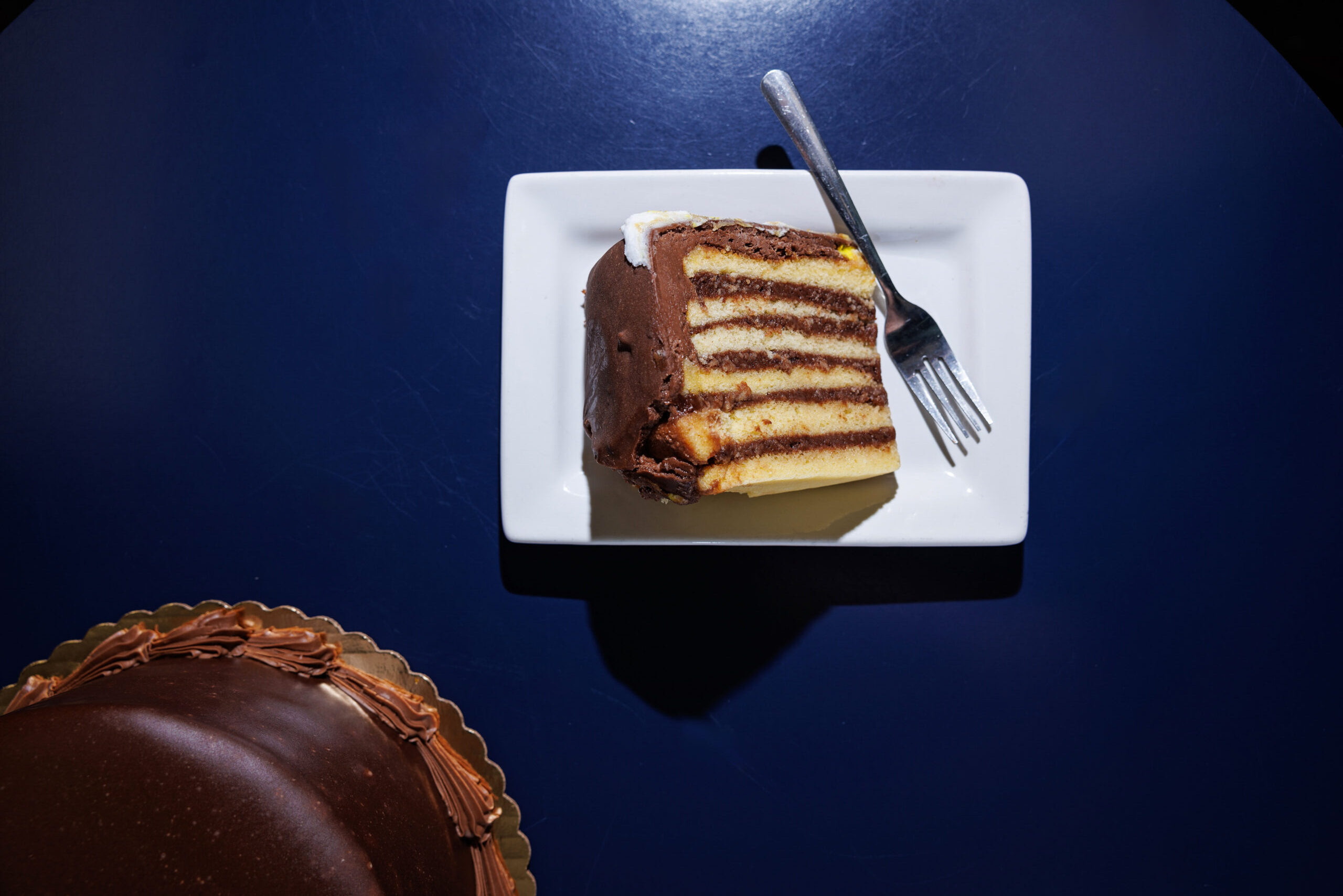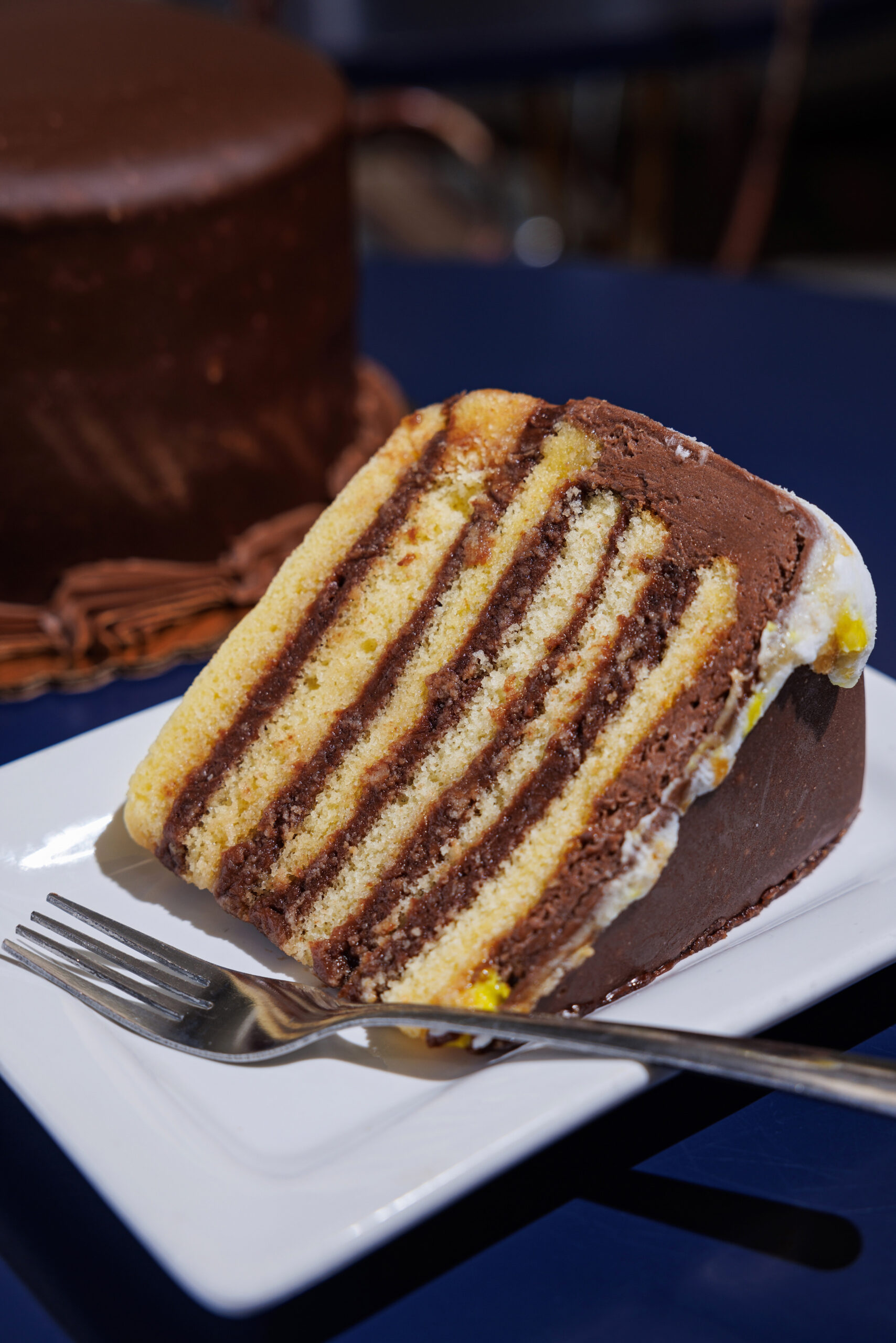
Delving into the layered history of Louisiana’s famous doberge cake
Thin round layers—six to eight of them—comprise a doberge cake, the celebrated pastry created in New Orleans in the 1930s and embraced across parts of south Louisiana. Draped in chocolate, lemon or caramel fondant, or sometimes a combination, the cake is a must-have for its fans, but it’s only found at select bakeries.
“We sell about 3,000 a year,” says Angella St. Romain, general manager of Gambino’s Bakery Baton Rouge.
The company sells additional doberge cakes from its New Orleans and Lafayette retail locations and ships them frozen nationwide, she adds. Other Capital Region bakeries make them, too, including Oak Point Fresh Market and The Ambrosia Bakery. They were also a marquee item at now-closed local institution Baum’s Fine Pastries.
|
|
A spin on the classic Hungarian Dobos torte, the cake was originally created by late New Orleans baker Beulah Ledner, who renamed it the more French-sounding “doberge” to appeal to the city’s Francophiles. She also substituted the pastry’s classic buttercream filling for a lighter cooked custard. The cake was a mainstay of Ledner’s bakery until she sold the business to Joe Gambino in 1946, along with the secret recipe, St. Romain says. (Ledner would later reopen a bakery in Metairie and continue selling doberge cakes.)
 Over the ensuing decades, Gambino’s helped popularize the dessert in New Orleans, and later in Baton Rouge, where it opened a location in the mid-’80s. The promise of a doberge has drawn New Orleans transplants to Gambino’s current Goodwood Boulevard store, St. Romain says, along with new adapters smitten by its signature excess. It’s one of the bakery’s most popular items.
Over the ensuing decades, Gambino’s helped popularize the dessert in New Orleans, and later in Baton Rouge, where it opened a location in the mid-’80s. The promise of a doberge has drawn New Orleans transplants to Gambino’s current Goodwood Boulevard store, St. Romain says, along with new adapters smitten by its signature excess. It’s one of the bakery’s most popular items.
Gambino’s Baton Rouge makes each doberge by preparing three yellow butter cakes and splitting them through the middle, a technique St. Romain uses to ensure a consistent moist texture. Made-from-scratch custard is spread between each. The stacked layers are iced with buttercream, creating a smooth landing strip for the subsequent fondant.
Chocolate is the most popular flavor, with lemon a close second. Fence sitters opt for a half-and-half. Rather than simply stitch two completed cake halves with a seam of icing—the easy way out, according to St. Romain—Gambino’s goes about it freehand. Its pastry chefs add scrupulously portioned chocolate and lemon custards between each layer, then slather the tower with equal shares of chocolate and lemon buttercream. It’s finished with a simultaneous pour of chocolate and lemon fondants that drape each half and meet in the middle with confident imperfection.
September is among the country’s most popular birthday months, and for Gambino’s, that’s high doberge season.
“It’s a busy time for us,” St. Romain says. “We sell a lot of these cakes. A lot.” gambinos.com
This article was originally published in the September 2024 issue of 225 Magazine.
|
|
|

